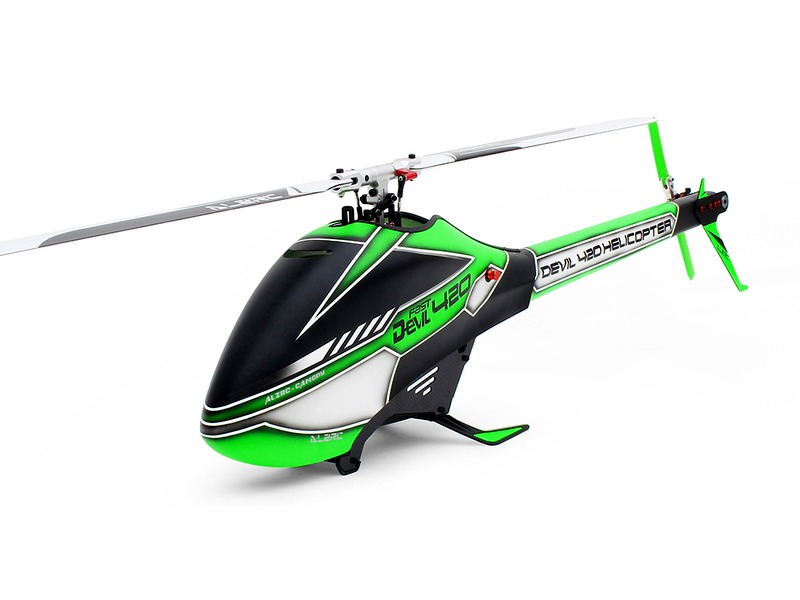Why is flying a RC helicopter hard?

Flying a RC helicopter is a difficult task that requires a great deal of skill and practice. The main reason why flying a RC helicopter is so hard is because of the complexity of the aircraft. RC helicopters are very small and lightweight, making them difficult to control and maneuver. Additionally, RC helicopters require a great deal of coordination between the pilot and the helicopter, as the pilot must be able to accurately control the speed, direction, and altitude of the aircraft.
One of the most difficult aspects of flying a RC helicopter is the fact that the aircraft is so small and lightweight. This makes it difficult to control and maneuver, as the slightest mistake can cause the aircraft to crash. Additionally, the small size of the aircraft makes it difficult to see the aircraft from a distance, making it difficult to accurately control the aircraft.
Another reason why flying a RC helicopter is so hard is because of the complexity of the aircraft. RC helicopters are powered by small electric motors and are controlled by a complex system of electronic components. This makes it difficult to understand how the aircraft works, and how to properly control it. Additionally, the complexity of the aircraft makes it difficult to diagnose and troubleshoot any problems that may arise.
Finally, flying a RC helicopter requires a great deal of coordination between the pilot and the aircraft. The pilot must be able to accurately control the speed, direction, and altitude of the aircraft, while also being able to react quickly to any changes in the environment. Additionally, the pilot must be able to anticipate the aircraft's movements and be able to adjust the controls accordingly. This requires a great deal of practice and experience in order to master.
In conclusion, flying a RC helicopter is a difficult task that requires a great deal of skill and practice. The main reasons why flying a RC helicopter is so hard is because of the complexity of the aircraft, the small size and lightweight of the aircraft, and the need for a great deal of coordination between the pilot and the aircraft. As such, it is important for anyone looking to fly a RC helicopter to take the time to learn the basics and practice regularly in order to become a competent pilot.
Comments / Question
2. Read the manual: Before you even take your RC helicopter out of the box, it’s important to read the manual. This will provide you with all the information you need to know about the helicopter, such as its parts, how to assemble it, and how to operate it.
3. Get help from an experienced pilot: It’s always a good idea to get help from an experienced RC helicopter pilot. They can provide you with tips and advice on how to fly your helicopter safely and efficiently.
4. Learn the basics: Before you attempt to fly your RC helicopter, it’s important to learn the basics. This includes understanding the controls, how to hover, and how to take off and land.
5. Practice in a safe environment: Once you understand the basics, it’s time to practice. Find a large, open space with no obstacles and practice flying your RC helicopter. This will help you get a feel for the controls and movements of the helicopter.
6. Fly with a buddy: It’s always a good idea to fly with a buddy. This way, they can help you if you get into trouble and can provide you with tips and advice.
7. Have fun: Finally, have fun! Flying a RC helicopter can be a great experience, so make sure to enjoy it.
2. Loss of Control: If the RC helicopter is not properly operated, it could lose control and crash.
3. Radio Interference: Radio interference can cause the helicopter to lose control and crash.
4. Weather Conditions: Wind, rain, and other weather conditions can make it difficult to fly an RC helicopter.
5. Injury: RC helicopters can cause serious injury if they crash into people.
2. Not Paying Attention to Battery Life: Before each flight, check the batteries to make sure they are fully charged and remember to switch them off after each flight.
3. Not Becoming Familiar with the Controls: All RC helicopters have different control interfaces, so make sure to become familiar with the specific model’s controls and learn how to properly trim it before flying.
4. Not Slowing Down: It’s common for beginners to be overconfident and attempt stunts like loops or flips before mastering the basics. Slowing down the speed and taking small steps helps develop the right muscle memory and build confidence.
5. Not Monitoring Conditions: It’s important to check the wind speed and direction before flying. Strong gusts of wind can make flying difficult and potentially cause a crash.
6. Not Updating Firmware: RC helicopter companies often update the firmware with the newest features and bug fixes. Make sure to check periodically for updates and download them when necessary.
2. Patience: Flying a RC helicopter requires patience and practice. It takes time to learn how to control the helicopter and to become proficient at flying.
3. Spatial awareness: Being able to judge the distance and speed of the helicopter in relation to its surroundings is essential for successful flying.
4. Problem-solving skills: Being able to troubleshoot and solve any problems that may arise while flying is important.
5. Knowledge of the helicopter: Understanding the mechanics of the helicopter and how it works is important for successful flying.

